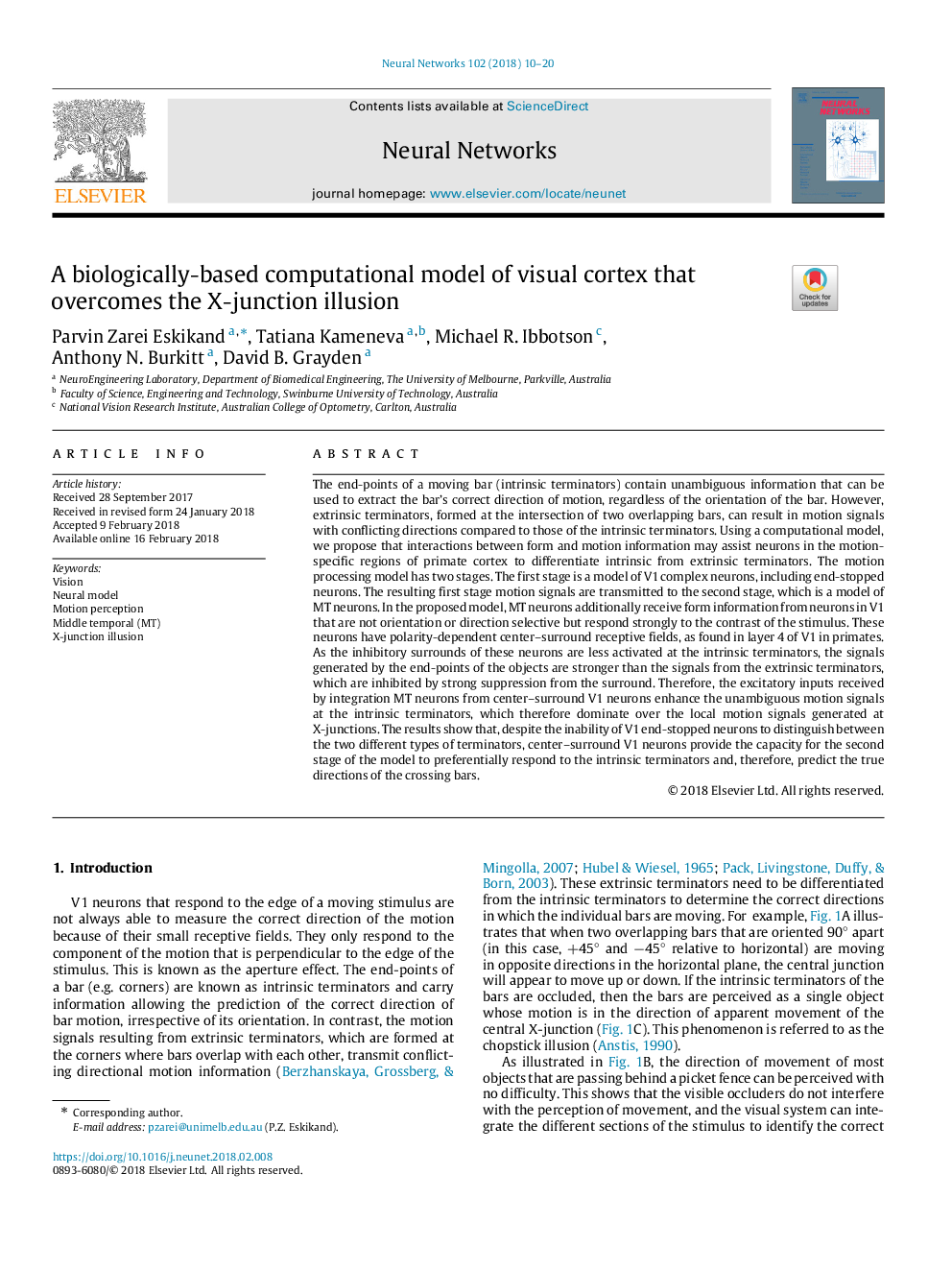| کد مقاله | کد نشریه | سال انتشار | مقاله انگلیسی | نسخه تمام متن |
|---|---|---|---|---|
| 6862990 | 1439401 | 2018 | 11 صفحه PDF | دانلود رایگان |
عنوان انگلیسی مقاله ISI
A biologically-based computational model of visual cortex that overcomes the X-junction illusion
دانلود مقاله + سفارش ترجمه
دانلود مقاله ISI انگلیسی
رایگان برای ایرانیان
موضوعات مرتبط
مهندسی و علوم پایه
مهندسی کامپیوتر
هوش مصنوعی
پیش نمایش صفحه اول مقاله

چکیده انگلیسی
The end-points of a moving bar (intrinsic terminators) contain unambiguous information that can be used to extract the bar's correct direction of motion, regardless of the orientation of the bar. However, extrinsic terminators, formed at the intersection of two overlapping bars, can result in motion signals with conflicting directions compared to those of the intrinsic terminators. Using a computational model, we propose that interactions between form and motion information may assist neurons in the motion-specific regions of primate cortex to differentiate intrinsic from extrinsic terminators. The motion processing model has two stages. The first stage is a model of V1 complex neurons, including end-stopped neurons. The resulting first stage motion signals are transmitted to the second stage, which is a model of MT neurons. In the proposed model, MT neurons additionally receive form information from neurons in V1 that are not orientation or direction selective but respond strongly to the contrast of the stimulus. These neurons have polarity-dependent center-surround receptive fields, as found in layer 4 of V1 in primates. As the inhibitory surrounds of these neurons are less activated at the intrinsic terminators, the signals generated by the end-points of the objects are stronger than the signals from the extrinsic terminators, which are inhibited by strong suppression from the surround. Therefore, the excitatory inputs received by integration MT neurons from center-surround V1 neurons enhance the unambiguous motion signals at the intrinsic terminators, which therefore dominate over the local motion signals generated at X-junctions. The results show that, despite the inability of V1 end-stopped neurons to distinguish between the two different types of terminators, center-surround V1 neurons provide the capacity for the second stage of the model to preferentially respond to the intrinsic terminators and, therefore, predict the true directions of the crossing bars.
ناشر
Database: Elsevier - ScienceDirect (ساینس دایرکت)
Journal: Neural Networks - Volume 102, June 2018, Pages 10-20
Journal: Neural Networks - Volume 102, June 2018, Pages 10-20
نویسندگان
Parvin Zarei Eskikand, Tatiana Kameneva, Michael R. Ibbotson, Anthony N. Burkitt, David B. Grayden,